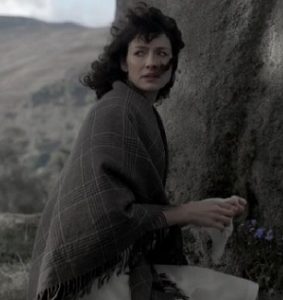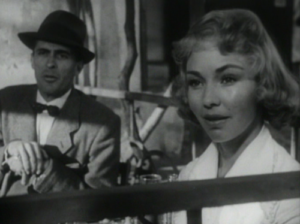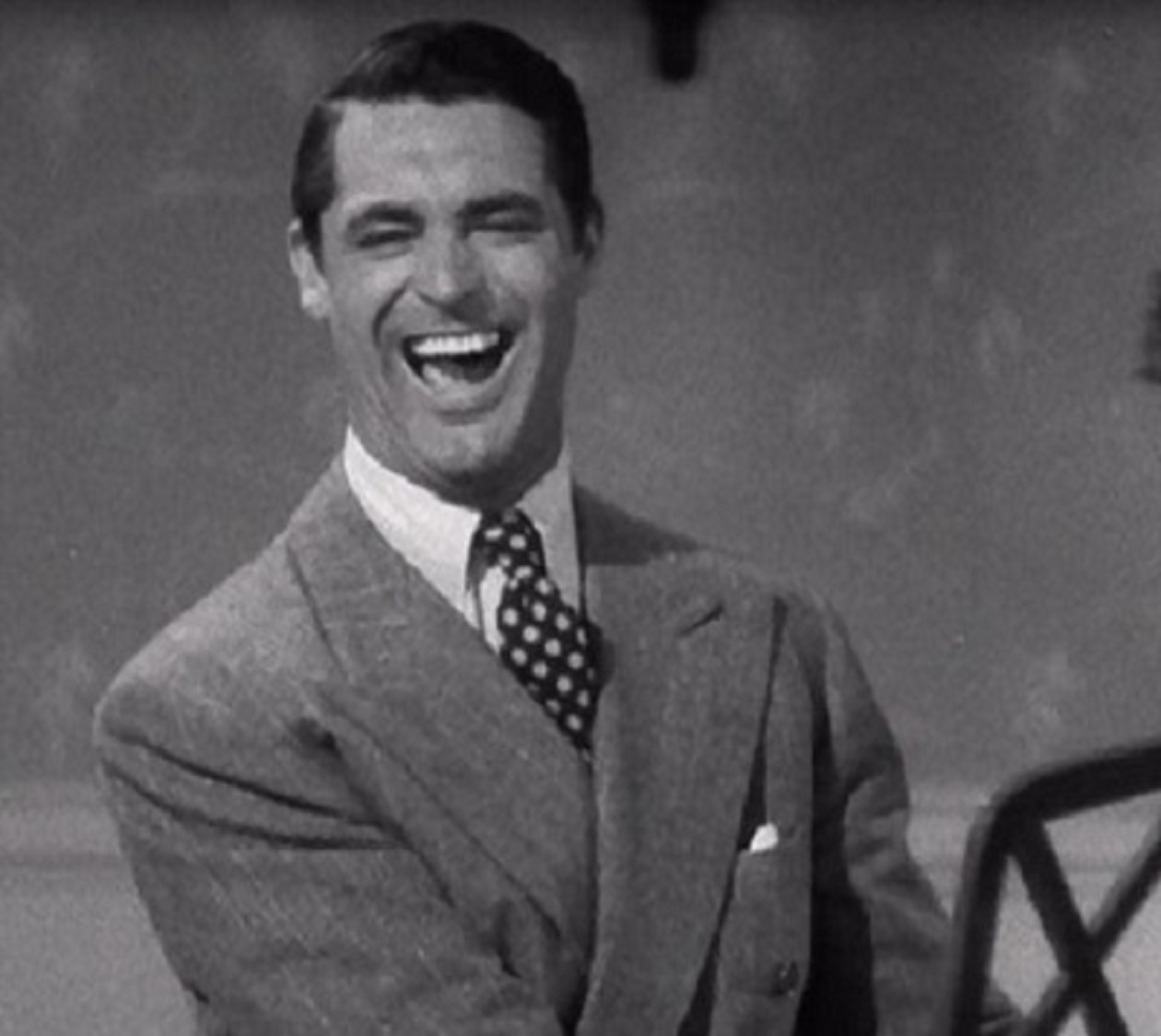I’ve always been a sucker for time-travel narratives, from Somewhere in Time and Back to the Future to 2012’s Looper and Safety Not Guaranteed. Not surprisingly, I quickly devoured Diana Gabaldon’s first four Outlander novels, and was excited to hear that Starz had picked up the series. One episode into the network’s translation of the books may be too early to compare the series to its source. But given how few of us subscribe to Starz, the question must be an early one: is the TV show playing it close enough to Diana Gabaldon’s beloved novels to be worth the investment?
For those who haven’t read it, the first Outlander book’s premise is this: Swept from the 1940s to the 1740s through a magical stone circle, nurse Claire Randall keeps attempting to return to her husband Frank.
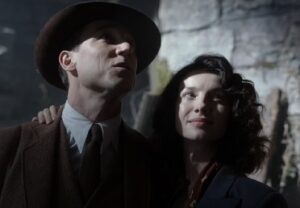
As she plots her homecoming, Claire becomes increasingly caught up in the lives of the MacKenzie clan.
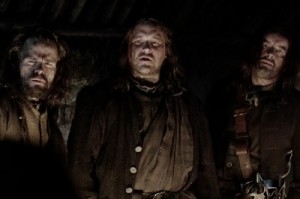
The book is an impressive amalgam of sci-fi, fantasy, romance, and Scottish historical and medical history, with Claire’s role as a healer contributing to her being mistaken for a witch and a spy by Scots and Brits alike. Unfortunately, Claire soon forms an enemy she can’t harm, Frank’s ancestor.
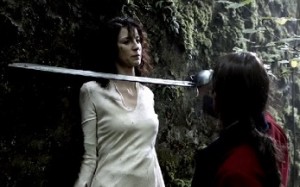
And she runs into a complication she can’t resolve, an increasing attraction and debt to protector Jamie Fraser.
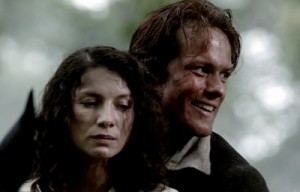
Like any reader, I watched the pilot of Outlander expecting to be disappointed by the casting. But Starz has done an astonishingly good job with its selections, particularly of lead Jamie (Sam Heughan). I still remain skeptical about actress Caitriona Balfe as Claire, but my doubts may be the result of the exposition she was forced to relay in voiceover, probably a necessity due to the complicated plot.
What surprised me is how nostalgic the pilot made me for a movie from my childhood, Portrait of Jennie (1948), and how much my concerns about Claire’s casting echoed my irritation with the choice of Jennifer Jones (the future wife of its producer, David O. Selznick) for its heroine.
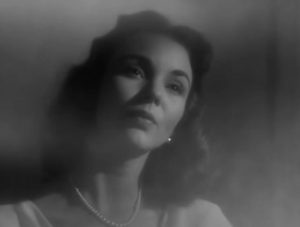
To compare the complex story of Outlander to this simple romance might be a stretch, but hear me out. Both productions began with well-regarded novels. (Admittedly, Gabaldon has a substantial following, while enough time has passed since Robert Nathan’s glory days that his 1940 book now sits in that Kindle-Nook limbo, with new paperbacks less easy to come by.)
Nathan’s bittersweet fantasy is fairly simple, and the film follows it somewhat closely: Struggling painter Eben Adams (Joseph Cotten) runs into a girl in the park. She is dressed in old-fashioned clothes and has a timeless quality about her. He doesn’t know yet that she’s from the past.
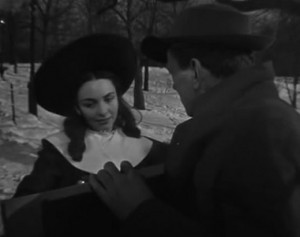
Only when she continues to visit him, having aged considerably each time, does he discover that her time is out of joint with his. Mysteriously (we never learn how), she’s able to slowly catch up with his age, hopeful that if she does, they can be together.
In the meantime, Eben begins to sketch Jennie, and his portrait of her soon leads him to the success his landscapes never afforded him.
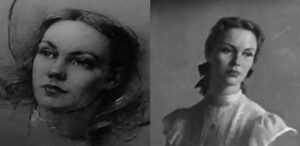
A sketch and a later portrait of Jennie (the latter by artist Robert Brackman)
Eben’s professional life is on the rise, but his future with Jennie is uncertain: will she be able to make it to and stay in his future, or will time/the elements pull these lovers apart?
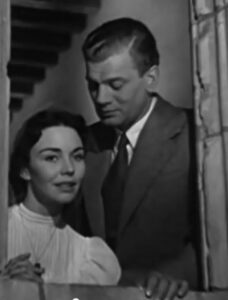
The book is so whimsical, yet so straightforwardly written, that it has a charm and mystery about it that the less subtle film never manages to master. My bias against Jones, which had its root in having only seen her as a saint, may have tainted my first evaluation of the movie (as did my childhood skepticism about classic film). But I think it didn’t help that, as in The Major and the Minor, the film tried to pass off an adult woman as a girl instead of hiring a child who resembled Jones.
While I may nitpick about details still, I neglected to consider as a kid just how much the camera work DID capture the lovely, haunting mood of the book; how perfectly Ethel Barrymore (grand-aunt to Drew) portrays Eben’s patron; and how beautifully Jones expresses the terror and pathos of this young woman, who has lost her family in a tragic accident, and longs for a man she may never attain. It may be true, as one could easily charge, that Selznick was too enamored with his love (Jones) to judge the film clearly, but after all, she was his muse in the same way Jennie was Eben’s, and the soft focus on Jones’ features does convey the level of obsession and love Eben feels for this timeslipping girl. I find myself liking it more every time I see it. (Warning: Do not read about it online before viewing it; spoilers abound.)
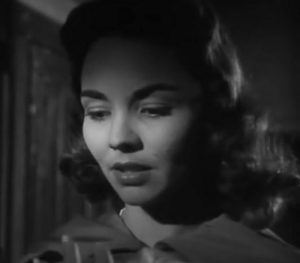
The fear Jennie faces is what The Outlander pilot gets so right about Claire. The show will inevitably have to reduce and simplify some of that book’s (and its sequels’) rich complexity, and will lose much in the process. But it will gain in shots of the landscape, in period details the reader can’t quite imagine, and most of all, in helping us experience the terror of being lost in time, and not sure, as with Jennie, of ever getting to the moment where we feel we belong.
